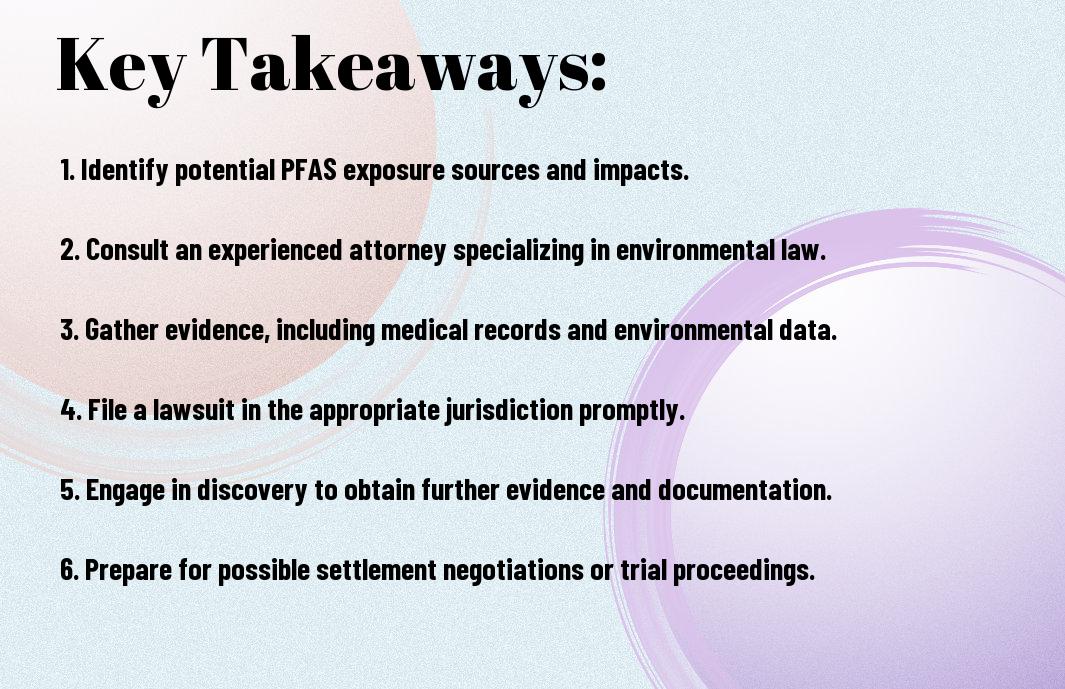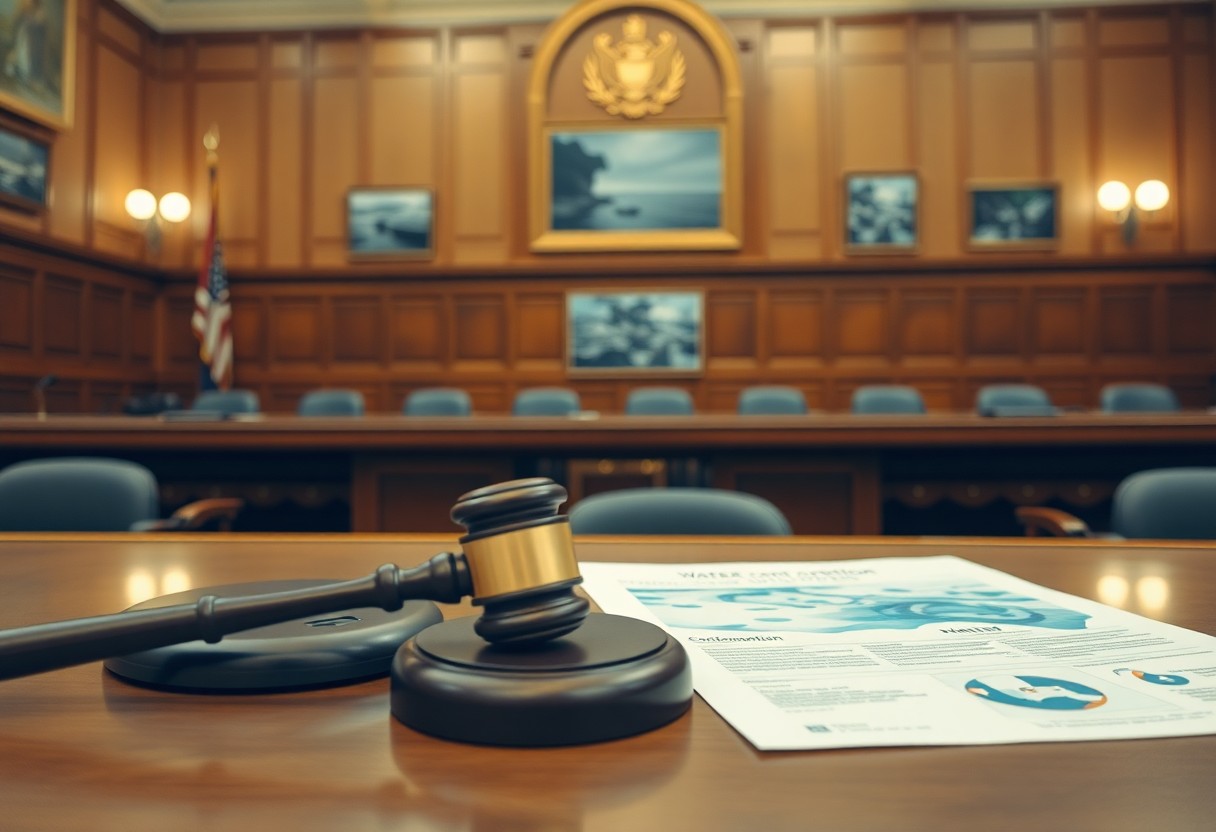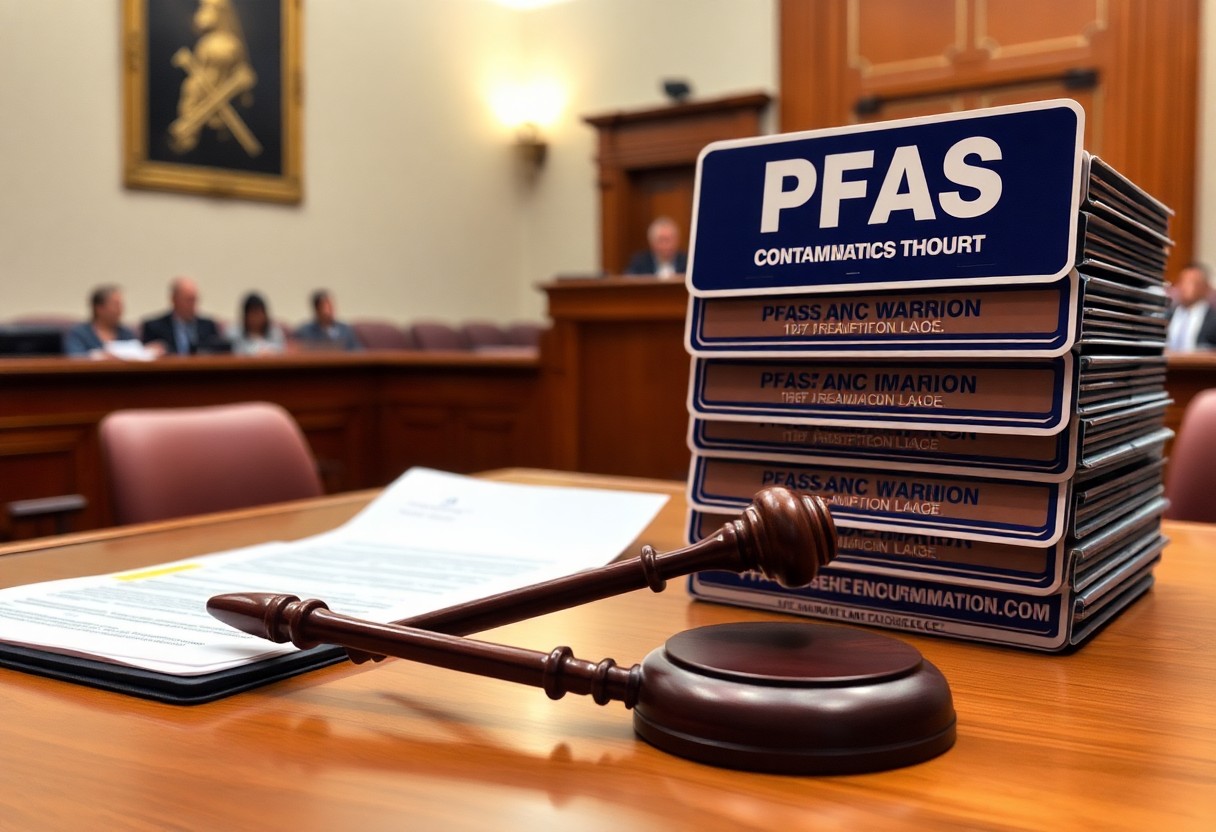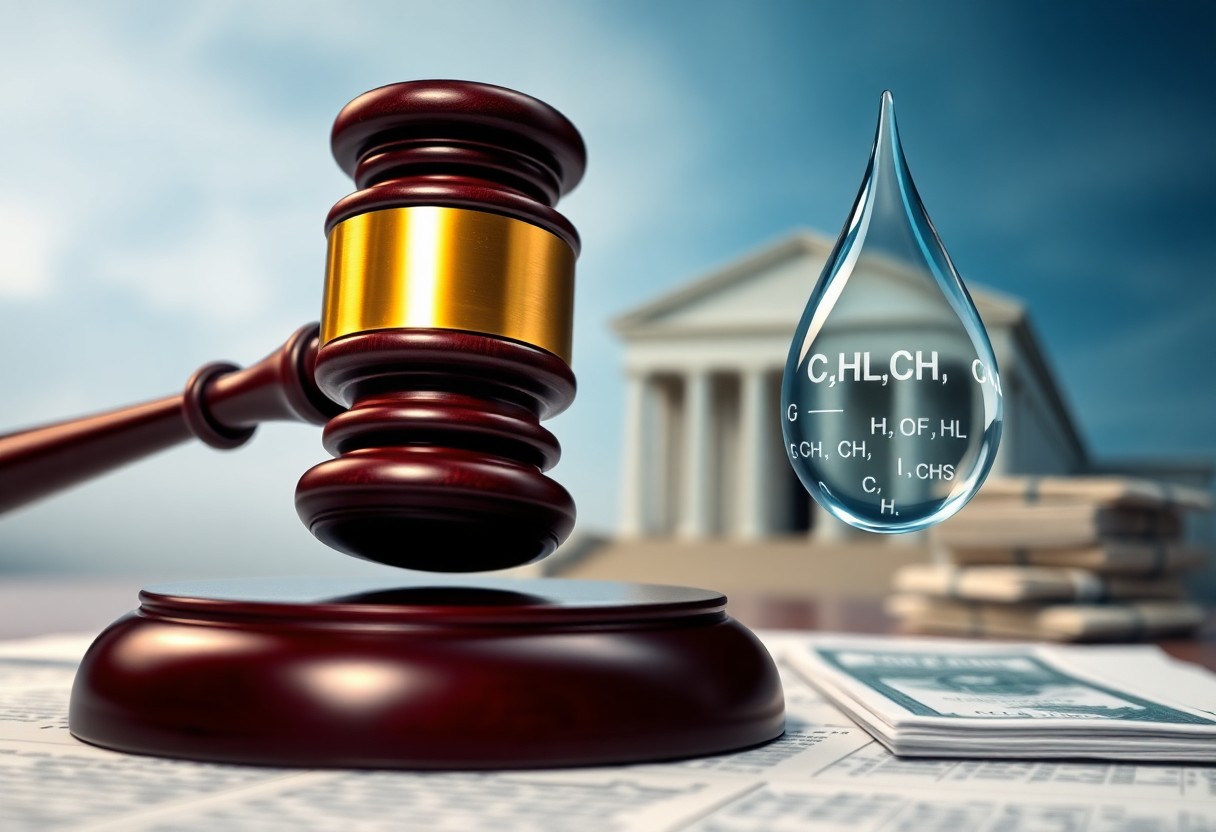The process of navigating a PFAS lawsuit can be complex, but understanding the key steps will empower you to pursue justice effectively. In this post, you will learn about the necessary phases, from filing your complaint to court proceedings and potential settlements. Each step plays a vital role in ensuring your case is properly handled and your rights are protected. By familiarizing yourself with this process, you can better prepare for what lies ahead in your pursuit of accountability for PFAS exposure.
Understanding PFAS and Their Impact
The rise of per- and polyfluoroalkyl substances (PFAS) has become a pressing concern for both public health and the environment. These synthetic chemicals, commonly found in various consumer products, have been linked to serious health issues and environmental degradation. As awareness of their risks grows, it’s vital for you to understand what PFAS are and the significant impact they can have on your life and community.
Definition of PFAS
Their chemical structure enables PFAS to resist water, grease, and stains, making them popular in items like non-stick cookware and waterproof clothing. However, this very durability means they persist in the environment and your body, leading to accumulation over time.
Health and Environmental Concerns
Before engaging in a PFAS lawsuit, you should be aware of the serious health and environmental risks associated with these substances. Studies have linked PFAS exposure to various health issues, including cancer, liver damage, and reproductive harm, while also contributing to widespread water contamination.
Considering the ongoing research and evolving findings surrounding PFAS, it becomes increasingly important for you to recognize the potential long-term effects on your health and the environment. As these chemicals linger in the soil and water systems, they can disrupt ecosystems and pose risks to wildlife. Understanding the implications of PFAS is vital for making informed decisions about your exposure and pursuing justice through legal avenues if you’ve been affected.
Initiating a PFAS Lawsuit
Some individuals affected by PFAS contamination choose to seek justice by initiating a lawsuit against the responsible parties. This process starts with understanding your rights and determining whether you have a valid legal claim based on the harm caused by PFAS exposure. You should consult with an experienced attorney who specializes in environmental or product liability cases to help navigate this complex process effectively.
Identifying Legal Grounds
PFAS lawsuits typically hinge on various legal grounds, including negligence, strict liability, or failure to warn. You must evaluate the specifics of your case with legal professionals who can guide you on which claims are most applicable based on your situation.
Gathering Evidence and Documentation
The success of your PFAS lawsuit often relies on the quality and quantity of the evidence you can provide. You should collect medical records, exposure histories, and any relevant information about the sources of contamination, as these documents will help substantiate your claims.
Plus, obtaining expert opinions and scientific studies can further bolster your case. Detailed records of how PFAS has impacted your health and environment will be invaluable in demonstrating the extent of your damages. Keeping clear documentation, such as photographs, correspondence, and reports related to PFAS, will enhance your overall argument and strengthen your position in the legal proceedings.

Filing the Lawsuit
Even after gathering evidence and consulting with legal experts, you’ll need to formally file your lawsuit in the appropriate court. This step initiates the legal process and officially alerts the defendant about your claims regarding PFAS exposure. Filing correctly ensures that your case proceeds without unnecessary delays due to jurisdictional issues or procedural errors.
Understanding Jurisdiction and Venue
Across different cases, you must determine the appropriate jurisdiction and venue for your lawsuit. This involves examining where the PFAS exposure occurred and where the responsible parties reside or conduct business. Selecting the right court is vital for your case to be heard effectively and to adhere to legal protocols.
Drafting the Complaint
Below, you’ll need to create a formal complaint that outlines your allegations against the defendant. This document serves as the foundation of your lawsuit and must clearly articulate the reasons for your claims, the damages you seek, and the legal basis for your case.
Considering the importance of the complaint, it’s vital to include precise details about how PFAS has affected your health or environment. You should specify the nature of your claims, refer to relevant laws, and provide factual evidence to support your allegations. A well-crafted complaint not only sets the tone for the entire lawsuit but also affects the strategy during negotiations and court proceedings.
The Discovery Phase
Once again, you enter an necessary stage in the PFAS lawsuit process, known as the discovery phase. Here, both parties investigate the facts surrounding the case, gathering vital information that will shape the arguments presented in court. During this time, you may request documents, witness information, and expert opinions, building a comprehensive understanding of the PFAS contamination and its impacts.
Collecting Additional Evidence
Around this stage, you will focus on collecting additional evidence to strengthen your case. This may involve acquiring scientific reports, documents from governmental agencies, or other relevant materials that can support your claims regarding PFAS exposure and health impacts.
Depositions and Interrogatories
Beside gathering documents, you will also conduct depositions and interrogatories as part of the discovery phase. These tools enable you to question witnesses and gather detailed testimonies that clarify the facts and strengthen your position against the defendants.
Understanding the significance of depositions and interrogatories is necessary. Depositions are formal, recorded sessions where witnesses provide sworn testimony, and you can ask follow-up questions. Interrogatories are written questions that the defendants must answer under oath. Both processes allow you to uncover important details, test the credibility of witnesses, and understand the other party’s perspective, making them invaluable in preparing your case.
Pre-Trial Proceedings
Keep in mind that the pre-trial proceedings in a PFAS lawsuit lay the groundwork for the trial itself. This phase involves various activities including the exchange of evidence, identifying witnesses, and filing motions that can shape the case. Understanding these steps is crucial for preparing effectively, assisting your legal team, and ensuring your rights are protected throughout the process.
Motion Practice
On the road to trial, you may encounter motion practice, where either party can ask the judge to make decisions on specific legal issues. This can include motions to dismiss, motions for summary judgment, or motions to compel discovery. It’s important to understand that these motions can significantly influence the proceedings and may even resolve certain aspects of your case before it goes to trial.
Mediation and Settlement Discussions
Among the key elements of pre-trial proceedings are mediation and settlement discussions. These processes offer you an opportunity to negotiate terms and reach a resolution without going to trial, potentially saving time and resources.
With mediation, a neutral third-party mediator guides discussions between you and the opposing party to facilitate an amicable settlement. This approach allows both sides to express their views and work toward a compromise that meets your needs. Engaging in settlement discussions can be beneficial as it provides a chance to resolve the case more quickly and avoid the uncertainties of a courtroom trial. It’s crucial to have legal representation during these discussions to ensure your interests are effectively advocated for.
The Trial Process
Now that the pre-trial motions and hearings are completed, the trial process begins. This is the stage where both parties present their case before a judge or jury. You will see the presentation of evidence, witness testimonies, and expert opinions that aim to support your claims or defenses. It’s an crucial part of the lawsuit, as the outcome depends heavily on how effectively each side communicates their position and the strength of the presented evidence.
Presenting Evidence
Presenting evidence is a key component of the trial process. Your attorney will introduce various forms of evidence, including documents, expert witness testimonies, and physical evidence. This is where you showcase the impact of PFAS on your life and health, providing the jury with a clear understanding of your experience. Strong evidence can significantly influence the jury’s perception and the ultimate outcome of your case.
Jury Deliberation and Verdict
One of the final stages in the trial process is jury deliberation and reaching a verdict. After both sides have presented their cases, the jury will retire to discuss the evidence and arguments. Your fate in the lawsuit hinges on their ability to come to a consensus regarding the facts of the case.
Even though juries are tasked with examining the evidence impartially, their deliberation can take varying amounts of time depending on the case complexity. They will discuss the validity of the claims, the evidence’s credibility, and whether liability has been established. Once they reach a decision, they will return to the courtroom to deliver their verdict, which determines if you are entitled to compensation and, if so, the amount awarded. This verdict can significantly impact your financial future and well-being.

Conclusion
The key steps in a PFAS lawsuit process involve gathering evidence, consulting with legal experts, filing the complaint, and navigating through discovery and potential settlement negotiations. You should focus on understanding the specific legal claims you can make and be prepared for a potentially lengthy litigation process. Engaging a qualified attorney with experience in environmental law can significantly enhance your chances of success, ensuring that you effectively advocate for your rights and seek the compensation you deserve for PFAS exposure.


















